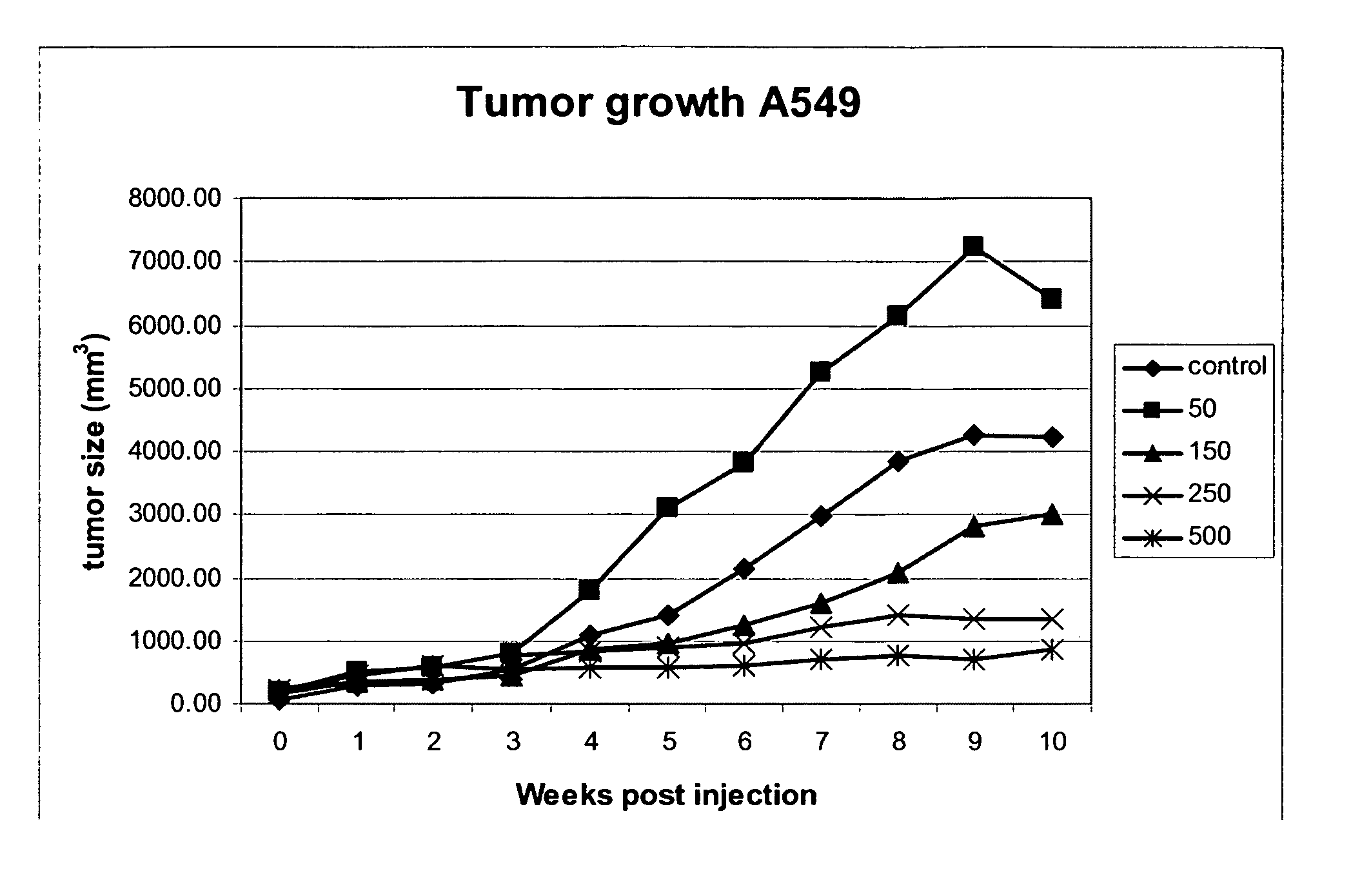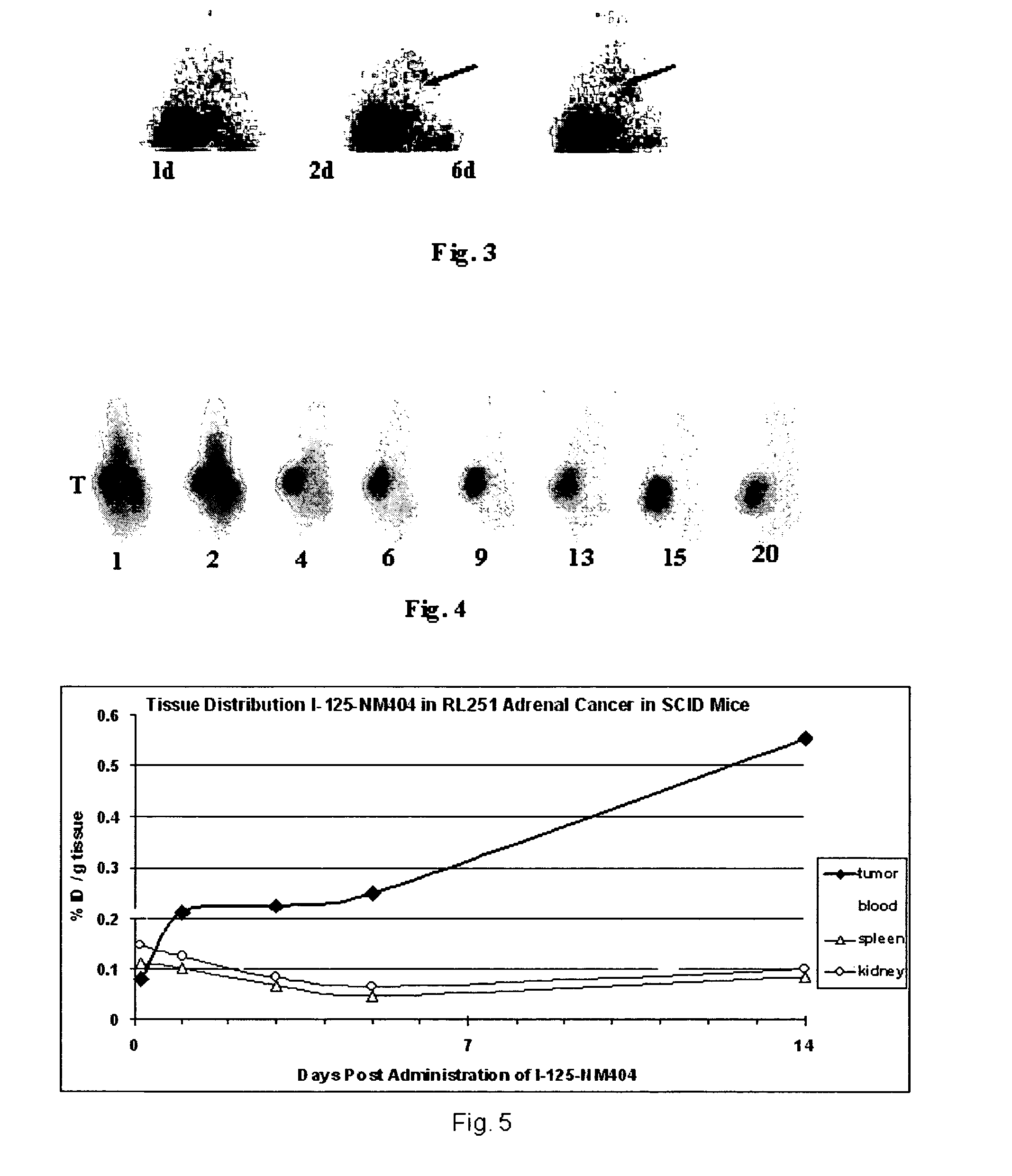Phospholipid ether analogs as cancer treatment agents and methods thereof
a cancer treatment agent and phospholipid ether analog technology, applied in the field of phospholipid ether analogs, can solve the problems of lack of specificity, limited utility in diagnosing brain tumors or metastases, and only about 90% of mediastinal lymph node involvement identification
- Summary
- Abstract
- Description
- Claims
- Application Information
AI Technical Summary
Benefits of technology
Problems solved by technology
Method used
Image
Examples
Embodiment Construction
[0093] The present invention generally provides methods and techniques for the detection and treatment of various cancers. The present invention provides a method for detecting and locating recurrence of cancer, radiation and chemo insensitive cancer or metastasis of cancer selected from the group consisting of Lung cancer, Adrenal cancer, Melanoma, Colon cancer, Colorectal cancer, Ovarian cancer, Prostate cancer, Liver cancer, Subcutaneous cancer, Squamous cell cancer, Intestinal cancer, Hepatocellular carcinoma, Retinoblastoma, Cervical cancer, Glioma, Breast cancer and Pancreatic cancer in subject that has or is suspected of having cancer. The method comprising the steps of: (a) administering a phospholipid ether analog to the subject; and
[0094] (b) determining whether an organ suspected of having recurrence of cancer, radiation insensitive cancer or metastasis of cancer in the subject retains a higher level of the analog than surrounding region(s) wherein a higher retention reg...
PUM
 Login to View More
Login to View More Abstract
Description
Claims
Application Information
 Login to View More
Login to View More - R&D
- Intellectual Property
- Life Sciences
- Materials
- Tech Scout
- Unparalleled Data Quality
- Higher Quality Content
- 60% Fewer Hallucinations
Browse by: Latest US Patents, China's latest patents, Technical Efficacy Thesaurus, Application Domain, Technology Topic, Popular Technical Reports.
© 2025 PatSnap. All rights reserved.Legal|Privacy policy|Modern Slavery Act Transparency Statement|Sitemap|About US| Contact US: help@patsnap.com



